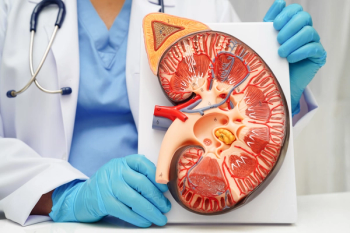
ABSSSI: Expediting Discharge With Oritavancin
Insight is provided regarding the AtlantiCare poster presentation that analyzed oritavancin’s potential to expedite discharge in acute bacterial skin and skin structure infections (ABSSSIs).
Joe Reilly, PharmD, BS, BCGP: So the data that were presented by Dr. Kristen Whitaker and colleagues from AtlantiCare looked at using oritavancin in a unique setting, and that is expediting discharge from the hospital. So these were patients who were admitted to the hospital with ABSSSI, and most of them received IV [intravenous] vancomycin. But oritavancin was utilized early on in therapy in patients who were hemodynamically stable and seemed to be improving in order to get them out of the hospital quicker. So every time a patient received oritavancin, they were discharged from the hospital 2 days sooner than in the comparator arm. So it was about 100 patients total, 50 per arm, and we found the length of stay in the vancomycin arm was about 5 days. The length of stay in the oritavancin arm was 3 days. We got them out quicker.
So that sort of negates the cost of oritavancin 2-fold because our acquisition cost for oritavancin equals about 1 day in the hospital. But what was interesting was that not only were these patients discharged sooner, but we followed up with them for 30 more days. And we found only 2 of the oritavancin group were readmitted within 30 days for infections or recurrence of infection. Both had gram-negative infections, and 9 of the vancomycin patients returned with infection. So we showed 4% versus about 18%, which is a significant reduction in reinfections. And I would attribute that primarily, and Tom may disagree, to ensuring that the patient got their full course of antibiotics.
Now, keep in mind, these patients who were admitted and did not get oritavancin, they stayed about 5 days in the hospital. They were discharged mostly on oral antibiotics in the outpatient setting. We don’t know whether they took them. In this patient population, there was a significant number of patients who were IV drug abusers or had a history of it. Many of the patients had prior infections within 30 days, treatment failures. So it resulted in significant cost savings for the hospital, expediting that discharge with the drug.
Tom Lodise, PharmD, PhD: Yes, and I think that that was actually quite impressive. When we think about oritavancin, there are 2 ways of really using a drug: shifting initial site of care to the outpatient or, as shown within the work by Whitaker, facilitating early discharge. So the 1 thing we did see within its clinical trials, half the patients were managed outpatient, and readmissions were only 1% with oritavancin compared with 2% to 3% with vancomycin. And now what we’re seeing is a lot of real-world evidence in support of that. Again, a number of groups have assessed this, Whitaker et al as well as others, and there are just some common themes across that. People get oritavancin. We see 30-day admission rates when they facilitate early discharge to be less than 10%, less than national averages. And only half of those are infection related. So, again, more and more people are operationalizing its use and assessing the associated outcomes. We’re seeing a lot of outcomes similar to what Joe described in the poster by Whitaker et al.
Joe Reilly, PharmD, BS, BCGP: Yes, and Whitaker’s data also showed that they prevented 112 hospitalization days just in the oritavancin arm. It was only 50 patients per arm or so, so 112 days in the hospital were prevented by using oritavancin, and the cost savings associated with using the drug and the cost of the drug were actually included in this analysis, which was over $217,000. That was a great underestimate, in fact, because when you looked at the recurrences, the patients that came back, 11 total patients came back. And 9 of those were in the vancomycin arm. They didn’t just come back with infections that were cellulitis; 4 of those 9 patients in the vancomycin arm came back with either bacteremia or osteomyelitis. So that’s interesting because it shows that they basically had disease progression. When we looked at those patients, we saw their cellulitis led to the osteomyelitis or their cellulitis led to their bacteremia. So they’re not just coming back with the same cellulitis; they’re coming back with a more serious consequence of lack of appropriate therapy.
Newsletter
Stay informed on drug updates, treatment guidelines, and pharmacy practice trends—subscribe to Pharmacy Times for weekly clinical insights.
















































































































































































































